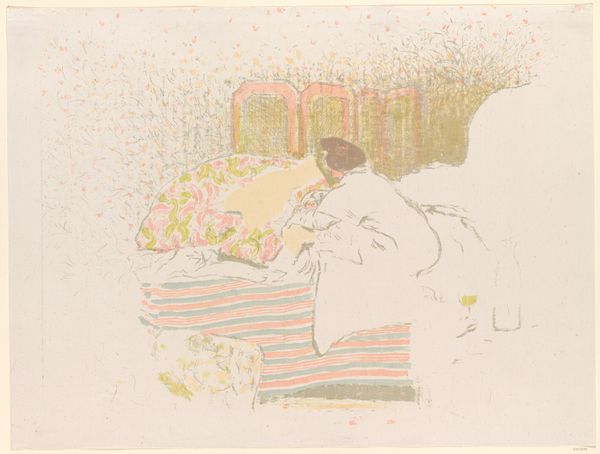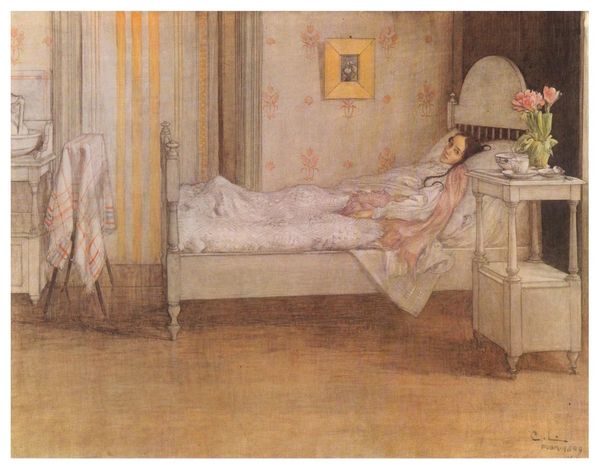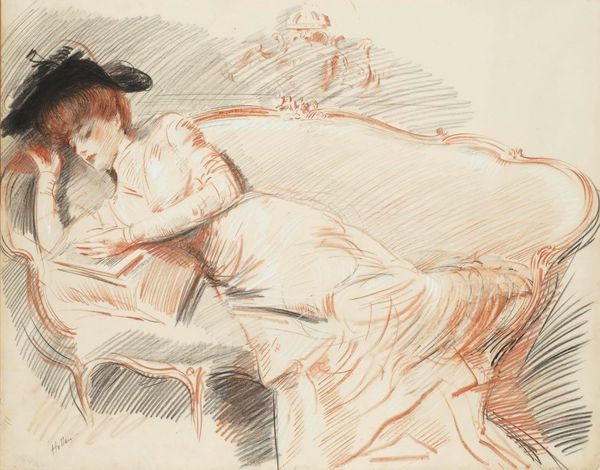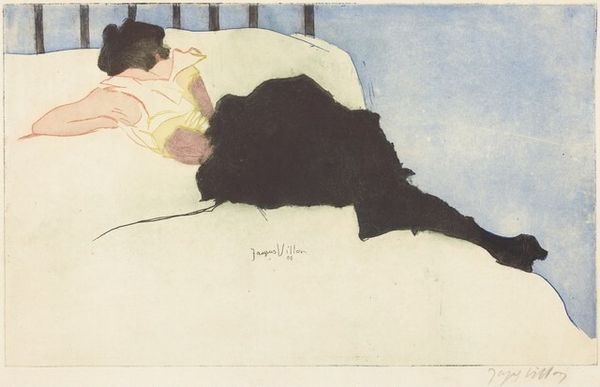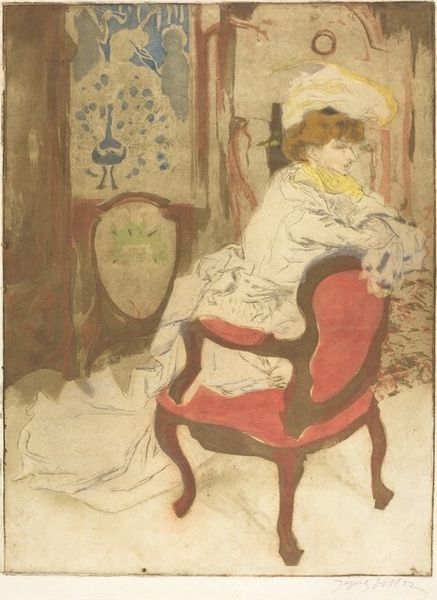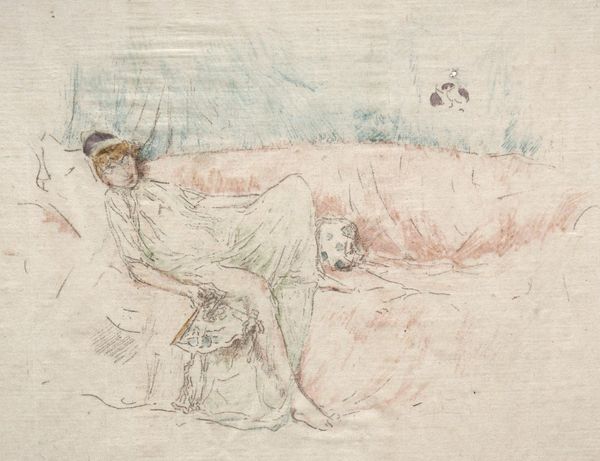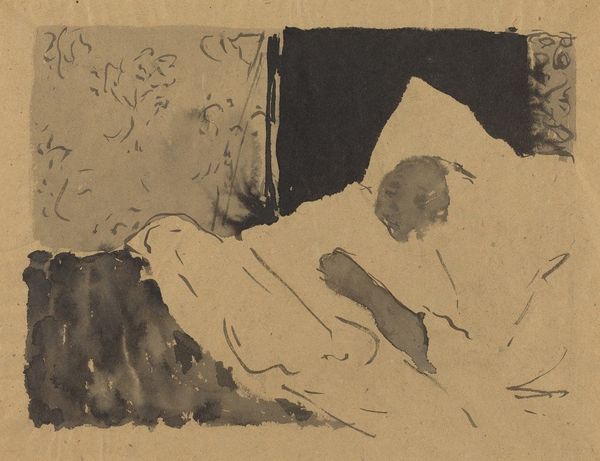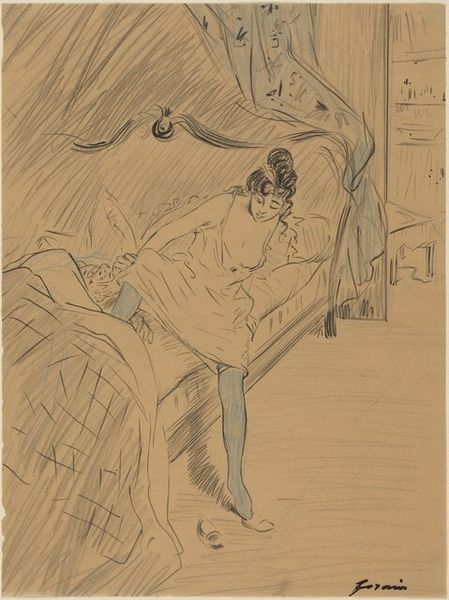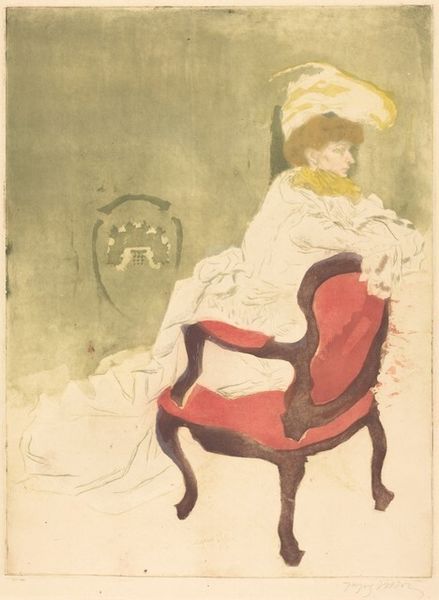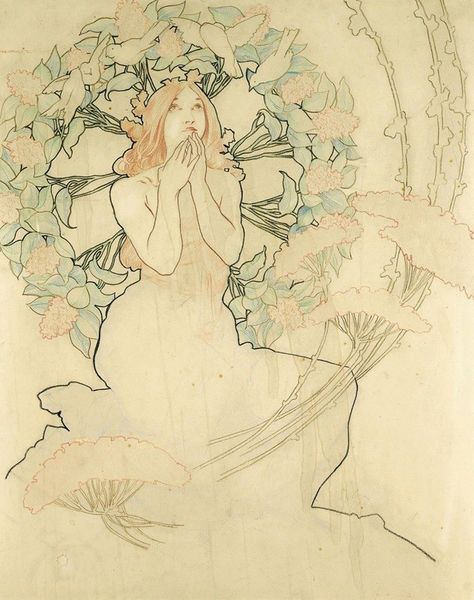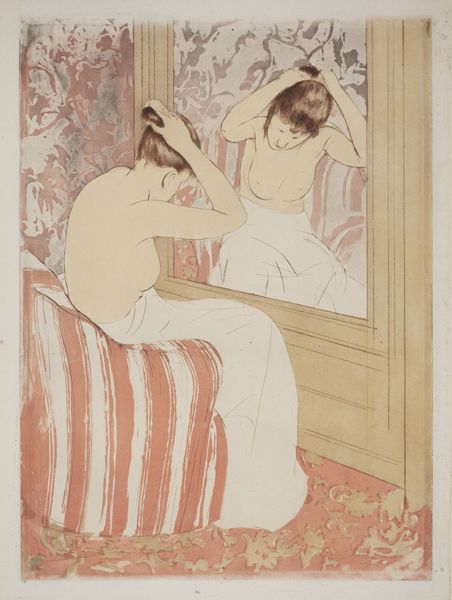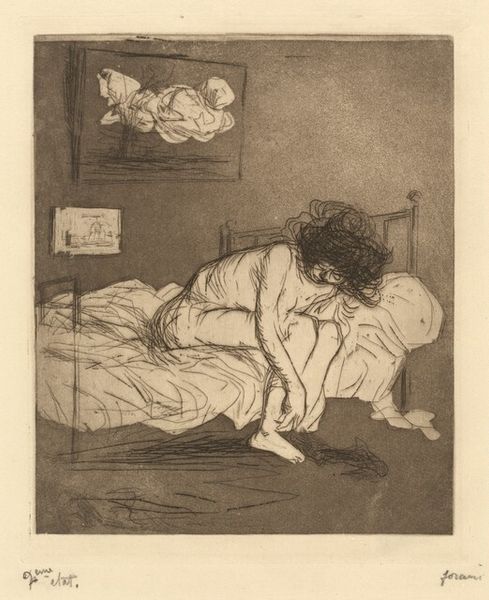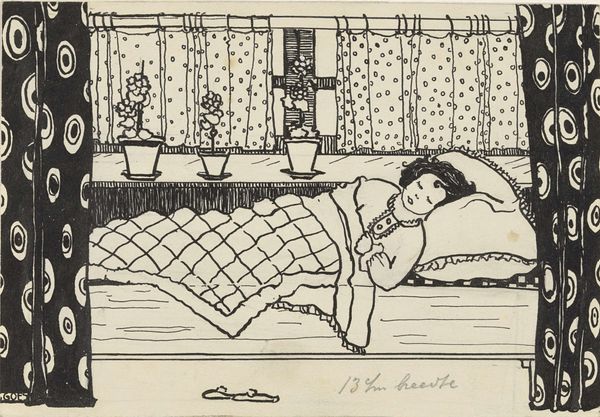
#
landscape illustration sketch
#
light pencil work
#
blue ink drawing
#
etching
#
abstract
#
ink drawing experimentation
#
sketchbook drawing
#
watercolour bleed
#
watercolour illustration
#
sketchbook art
#
watercolor
Copyright: Public Domain: Artvee
Editor: Here we have Vuillard’s "La naissance d’Annette," created around 1896-1900. It appears to be an etching with some watercolor elements. The composition feels very intimate and domestic. What do you see in this piece, especially concerning the materials he employed? Curator: This image really showcases Vuillard’s focus on the intimate details of bourgeois life, but let's think about his methods. Etching, traditionally considered reproductive, becomes something else in his hands, almost unique, mimicking the immediacy of drawing. Consider the textures achieved through layering of watercolor over etching – the material application suggests the dense interior spaces and cluttered domesticity of his subjects. How do you think the choices of printmaking influences his statement? Editor: I hadn’t considered the deliberate blending of what some might call 'high' and 'low' art forms, but using printmaking to mimic drawing introduces the idea of reproducibility into an intimate scene, which is definitely intriguing. It makes me think about how labor impacts the work, the time spent creating a printed image versus painting. Does it change the meaning for you? Curator: Exactly! Vuillard challenges hierarchies. The etching process, historically linked to mass production, is here employed for something delicate and personal. Consider the materiality of the paper itself, likely chosen for its absorbent qualities to enhance the watercolor washes, emphasizing flatness, questioning the traditional artistic materials to highlight the artist's process, almost a 'behind-the-scenes' look at creation. Editor: I never really looked at it that way, as process so deliberately guiding how to experience the image, and almost more interesting than the figures. Thank you! Curator: And thank you – by recognizing the material elements, we bring attention to how the artwork exists in a specific time and place, reflecting industrial capabilities.
Comments
No comments
Be the first to comment and join the conversation on the ultimate creative platform.
